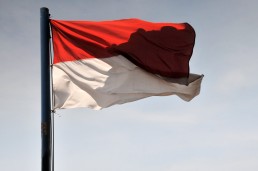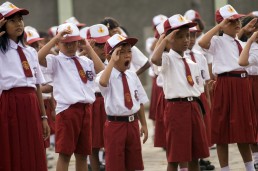Saluting The Flag
SALUTING THE FLAG
Rosa Panggabean, LKBN Antara
The Flag ceremony, which involves raising and unfurling the national flag, playing the national anthem and reading out the Pancasila state philosophy and the Preamble of the 1945 Constitution, is meant to instill individuals with a sense of citizenship and to strengthen the collective identity of the nation.
Teachers says the flag ceremony, which used to be held every Monday morning, but which has been relegated to only once a month, or just on National Holidays, in the post New Order, 1998 Reform Era, teaches students discipline and reminds them of the national heroes’ struggle for independence.
Adelia, who was once a flag bearer, would agree, but not all children grasp the nationalistic significance of it all. Aditya sees the ceremony as an exercise that just happens to involve saluting the flag.
Since the beginning of the 2001/2012 (NOTE: Please check this. Isn’t it supposed to be 2011/2012?) academic year, the Ministry of Education has required all schools to hold the flag raising ceremony regularly.
However, Mr. Arief Rachman, an expert in education, questions the efficacy of this ritual in instilling patriotic dedication. Although he acknowledges that the flag ceremony plays a structural role in developing nationalism, patriotism and national pride, he adds that nothing instructional or compulsory will last long in a child’s heart. He points out that a cultural approach, which involves the students actively in the meaning of citizenship through social experiences and emotional connections, would be more effective.
CAPTIONS
- The Red and White
- Flag in the wind
- A student salutes the flag
- A child yawns during a flag ceremony
- A teacher lines up students before the ceremony





